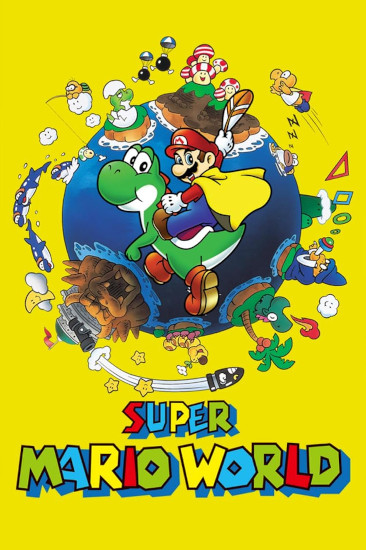The Debate Over Videogames Rages On (and On)

(Photo credit: Depositphotos.com)
There is something truly satisfying about finally finishing a videogame after hours of gameplay. Whether your gaming cup of tea is role-playing games or action-adventure, first-person or third-person, multiplayer or single-player, there are inherent benefits … and consequences.
Since the inception of the first videogame, "Tennis For Two," created by physicist William Higinbotham in 1958, there has been constant debate about the positives and negatives of the medium.
As often reported, one of the top concerns involves violence and aggression. Around 85% of videogames on the market, back in 2020, had some form of violence – however, “violence” is a subjective term. What violence means to one person could mean something else to another.
The debate over violence in videogames can be traced back to 1976 with the release of "Death Race," which angered many because of the game’s goal of players chasing down and running over gremlins that looked like humanoid stick figures.
It specifically concerned the National Safety Council. The council’s research department manager and behavioral psychologist, Gerald Driessen, in a 1976 New York Times article said, “In this game [“Death Race”] a player takes the first step to creating violence. The player is no longer just a spectator. He's an actor in the process.”

This idea of interactivity is considered dangerous. Some say violent videogames are more harmful than violent TV shows or films because of the needed interaction and because they are “very engrossing and require the player to identify with the aggressor.”
However, certain games, like the 2017 "Get Even," include violence, but do all they can to dissuade players from engaging in it.
Certain games are entirely created as a medium to kill a bunch of characters, but there are also others that have interesting characters and complex storylines, such as the "Life is Strange" series -- an RPG series that follows characters with unique abilities, where violence only acts as a catalyst, like in a Disney movie where a parental figure dies.
The concern surrounding violence became worse in 1993 after "Mortal Kombat," a fighting game, was released.
Due to the graphic deadly shots, a joint congressional hearing took place to discuss “the growing concern that the game industry was irresponsibly marketing violent videogames to minors.”
In response to the demand for an effective ratings system, multiple popular game creators, such as Sega and Nintendo, among others, formed what would become the Entertainment Software Association that crafted the Entertainment Software Ratings Board, which is still in place today.
Videogames are not legally required to have an ESRB rating, but most console manufacturers and physical and online retailers require it for the games they offer.

Videogames are also believed to cause various health issues, both physical and mental.
Hyperarousal — caused by a fight-and-flight response triggered by intense stimulation in videogames’ hyperrealistic scenario — is one health concern. As are vision problems, seizures, "Gamer's Thumb" and carpal tunnel syndrome, among others.
Mental health issues, such as depression and anxiety, have also been linked to excessive videogaming. Gaming disorder was added to the World Health Organization's 2018 International Classification of Diseases.
The addictive disorder is generally characterized by gamers prioritizing gaming over other interests and daily activities and continuing to game despite negative consequences.
This type of addiction, even gone undiagnosed, has sparked the need for support groups such as Computer Gaming Addicts Anonymous.
Finishing a quest or a game as a whole can be a “high” and can make it harder to stop, but the catharsis involved in this can act as a stress relief.
Games can also provide an escape to another reality where you can go on otherworldly adventures and build a completely new self, which can be a haven for those who struggle with real-world constraints or fears.

The act of finishing a quest and/or the videogame can help gamers with task completion and communication skills, as well as resourcefulness and adaptability because of the wide variety of scenarios a videogame presents.
Games such as the "Resident Evil" series, which require the completion of puzzles to progress the storyline, can strengthen problem-solving capabilities. Other games have quick actions or intense parkour actions, such as the 2008 "Mirror's Edge," requiring the gamer to concentrate on the task at hand.
RPGs, such as "The Dark Pictures Anthology," require gamers to reflect on scenarios to make the best decision, and so on. Various games can help increase mental capabilities that can then be applied to the real world.
Sometimes the games themselves aren’t what spark positive effects, but the community within and outside them. Games such as the 2009 "League of Legends" and the 2017 "Deceit" are multiplayer and require coordination and/or communication amongst players to succeed.
Virtual communities can also form around players’ shared enjoyment of certain games or game franchises – despite some discussions turning ugly, thanks to trolls.
Videogames are also used outside of personal entertainment. They’ve been used in medical practices to improve balance in those with degenerative diseases, helping children with ADHD, and training surgeons on how to complete complicated surgeries.

(Photo credit: Depositphotos.com)
Games such as "Super Mario" have been shown to help improve memory and cognitive functioning amongst the elderly.
Gamification, in the form of videogames, is also taking the education world by storm. Games such as the 2004 multiplication game "Timez-Attack," my personal favorite as a kid, as well as MinecraftEdu and BrainPOP games, are trying to make learning fun.
Yes, the debate rages on. The pros and cons to videogaming are interconnected and varied, and it’s up to you whether or not you decide to play.
Author Bio:
Ariana Powell is a contributing writer at Highbrow Magazine.
For Highbrow Magazine































































































































































































































































































































